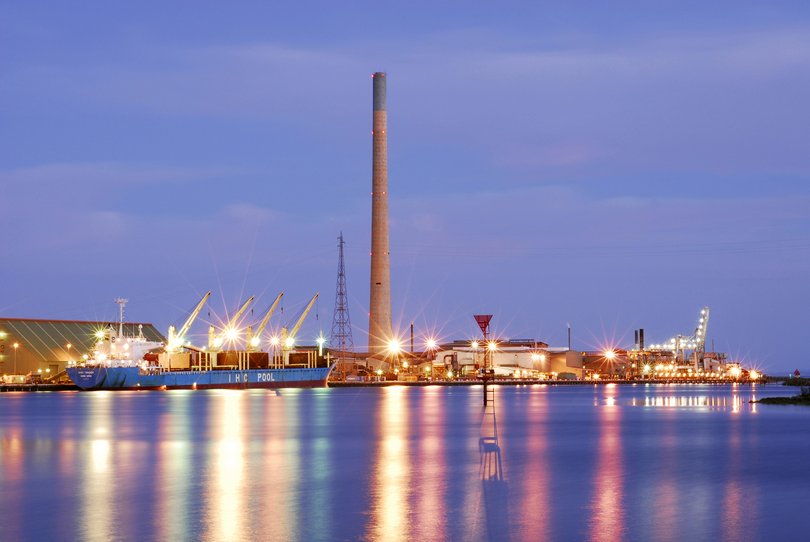JACKSON HEWETT: Can critical minerals save Australia’s smelting industry?

Australia’s dying smelting industry has partly been blamed on rising energy costs, but it is China’s insatiable appetite for highly strategic minerals demanded by the defence industry that has seriously put the squeeze on processors.
As the Australian Government contemplates a taxpayer-funded bailout of zinc, lead, copper and nickel processors to keep high-paying jobs, the true value may lie in the plants’ tailings.
Huw McKay, former economist at BHP and now a visiting fellow at the Crawford School at ANU, said strategic metals such as gallium, germanium, indium, bismuth and antimony were to be found in the ore bodies of bauxite, zinc and lead - but were currently being discarded as waste.
Sign up to The Nightly's newsletters.
Get the first look at the digital newspaper, curated daily stories and breaking headlines delivered to your inbox.
By continuing you agree to our Terms and Privacy Policy.The materials are the building blocks of the modern age, including in electrification, semiconductors, magnets, as well as defence, and supply is increasingly being dominated by China, which has used export controls on the rare minerals as a bargaining tool in its trade war with the US.
Mr McKay believes Australia must ensure it retains supply of the strategic minerals, and sees a world where there is a “not-zero” chance of conflict with China. He said in the event of conflict, Australia won’t be racing to stockpile Chinese-made solar panels but it will need magnets, semi-conductors and other minerals critical for defence.
“If you think the probability of conflict is non-zero, the precautionary principle says you should be doing some planning,” he said.
“You can trade as much as you want with a rival, but you can’t trade with an enemy.”
Mr McKay believes Australia should co-invest in the ongoing operation of at-risk smelters with the proviso they expand their processing capacity to extract these rare materials, rather than let the processors close and the capacity to extract the materials disappear.
“This is a latent strategic asset for any country which is processing bauxite, lead, or zinc. Let’s liberate that asset and to do that we should think about stockpiling and creating the incentives to invest in this extra processing capacity,” he said.
“This is not just an Australian problem, but we are now at a point where basically every downstream processing facility in Australia of any scale is asking for a bailout and without some non commercial finance coming in, it’s very likely that many of these assets would close.”
Mr McKay’s warning comes as smelters are increasingly at risk.
On Wednesday, Glencore warned a Queensland government rescue package for its copper smelter and refinery was not enough to save the business, and that it was preparing to shutter the Mt Isa plant, with the loss of 550 jobs.
Aluminium smelters run by Rio Tinto in Tomago, west of Newcastle, Boyne in Central Queensland, and Bell Bay in Tasmania are at risk, as is Nyrstar’s lead and zinc refining capability in Port Pirie, pictured, and Hobart.
The Coalition has called for a Senate inquiry into the potential collapse of the industry, citing high power costs as a key factor affecting the profitability of firms.
Rio Tinto had said the high energy prices were most acute at Tomago, Australia’s largest smelter, and if a solution to the current power agreement — which expires in 2028 — wasn’t found, the plant might be forced to close.
While power agreements with renewables developers meant production in Queensland is more economic, however New South Wales renewable power was not progressing as quickly.
That is parlty because coal had become increasingly expensive as global demand accelerated. When it was originally built 42 years ago, coal was trading at $US30 ($45) a tonne, whereas it now trades at $US105 a tonne.
The pressure on refiners is not just from input costs, but a rapacious Chinese industry with state support.
Last July, BHP announced its WA Nickel arm, with both a refinery and the Nickel West mine, would be put into care and maintenance, affecting 3000 jobs. The company cited a nickel price that had dropped to $US15,200 a tonne, compared to a Nickel West breakeven price of $US20,000 a tonne. BHP will decide whether to shut the operation for good by February 2027.
Overcapacity in the nickel market was one factor; another was the increasing power of Chinese refiners, who relied on long-term government financing to build state-of-the-art plants.
Chinese dominance has been cited by the owners of the Nyrstar zinc and the 100-year-old lead refineries in Hobart and Port Pirie as an existential threat.

The plants, which support 1300 jobs, were “not competitive on an international basis comparing it to the Chinese smelters,” the CEO of Trafigura, owner of Nyrstar, said in March.
Mr McKay said rising power costs were a challenge to margins but, in the case of many refiners, a greater issue was the insatiable appetite of China for supply of the ore itself.
He said the biggest challenge was the amount buyers were willing to pay for the treatment and refinement charges (TCRC) that supported profitability.
In copper, for example, refiners would ordinarily be paid $US90 a tonne to process the ore that would go on to smelting.
But Mr McKay said demand for the ore, as well as the byproduct strategic materials, was so great, buyers were effectively paying miners to bypass domestic refiners.
“Chinese smelter procurement teams are just scouring the world finding trying to find any concentrate they can get their hands on, and they’re paying over the money for it. And that’s removing all profit margins for others,” he said.
Chinese refiners were benefiting from state support which meant they were able to absorb potentially unprofitable activity for China’s strategic goals, and many of those processed critical minerals were banned from export.
Mr McKay said the Australian Government should adopt a similar long-term philosophy and require any bailout to factor in the supply of strategic minerals.
Currently, the Government is proposing a stockpiling reserve of strategic minerals to generate greenfields development, but Mr McKay said it could be equally applied to Australia’s struggling refiners.
That would mean the Government collaborating on finance to upgrade Australia’s old smelters while adding extra capacity to remove key minerals.
“Without some non-commercial finance coming in, it’s very likely that many of these assets would close and wouldn’t get the capital injections which they would need to be to be viable in the long run on their current product set. I think we use the crisis which is being presented by this demand for bailouts, and actually take a strategic approach,” he said.
“We have these facilities in place. We have metallurgical skill sitting in place. And that metallurgical skill won’t stay in the country waiting around for someone to build a new smelter,” he said.
That would require a plan to stockpile reserves of strategic minerals to both support their price, and ensure long-term viability.
Given the minerals are critical for defence, it may also contribute to the lift in defence spending demanded by the US administration.
“It’s consistent with the future made in Australia policy, and you can put it in the defence budget at a time where we’re actually struggling to find things beyond AUKUS submarines to spend the defence budget on.”
The Government is looking for solutions on multiple fronts to preserve Australia’s refining capacity, with Industry Minister Tim Ayres calling on Glencore and other smelters to “step up and invest in transforming their facilities to meet future opportunities.”
“Domestic industrial capability... is a foundation of our national economic security and a key pillar of our Future Made in Australia agenda,” Mr Ayres said.
The companies themselves will struggle to make the case for new funding amid China’s current dominance, with Nyrstar previously stating it needs another $400 million to upgrade its Hobart plant.
Mr McKay’s strategic mineral strategy could be a way to meet both goals of economic security and national security.

